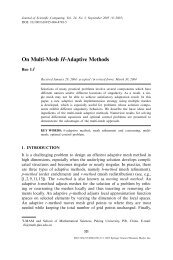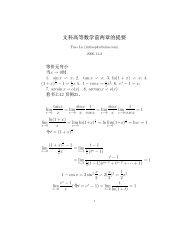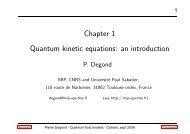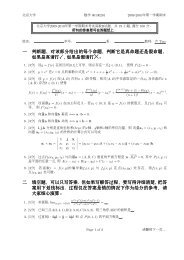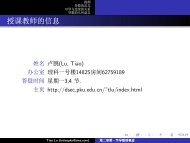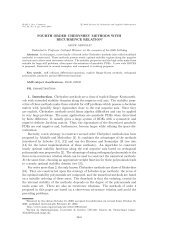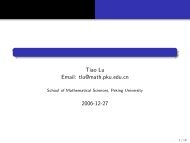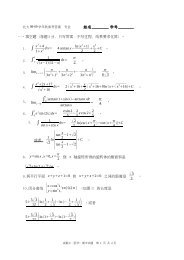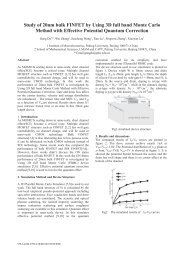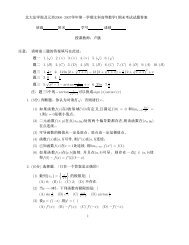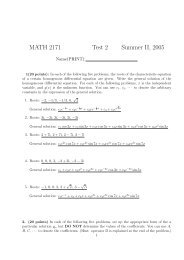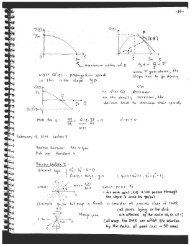Abstract
Abstract
Abstract
Create successful ePaper yourself
Turn your PDF publications into a flip-book with our unique Google optimized e-Paper software.
CHAPTER 3. BIFURCATION ANALYSIS 56<br />
3.6 Householder Continuation<br />
This method based on [37] was implemented in LOCA. The idea is to create an embed-<br />
ding E : R M → R M+1 such that for each y ∈ R M , Ey2 = y2 and Ey is orthogonal<br />
to the subspace created by the span of ˜t. Householder projections achieve this in a<br />
computationally efficient fashion. Also, Ey satisfies the one dimensional constraint<br />
(3.7) automatically for all y ∈ R M , and thus the constraint (3.7) is automatically<br />
built into each Newton step. Let Q : RM+1 → RM be the matrix Q = W ′ (f) ∂W<br />
<br />
. ∂V<br />
This is the Jacobian matrix of W with respect to the both the state variable f and<br />
the parameter V . Now the composition QE is a linear operator that maps vectors<br />
in R M to vectors in R M . The idea is to solve the linear system QE˜s = −W ( f,V)<br />
for ˜s ∈ R M and call its embedding the Newton step s = E˜s. An algorithm of this<br />
method is as follows:<br />
• Compute embedding E given tangent vector ˜t<br />
• Use GMRES to solve QE˜s = −W ( f,V) for ˜s<br />
• Set the Newton step s to E˜s.<br />
This method requires only the construction of E (which can be done quickly), and one<br />
linear solve with the coefficient matrix of QE. Since the bordering algorithms require<br />
two linear solves, we expect a factor of two speed up from using the Householder<br />
continuation instead of the bordering algorithm. Further, the linear solves within the<br />
Householder continuation will be better conditioned than the linear solves within the




